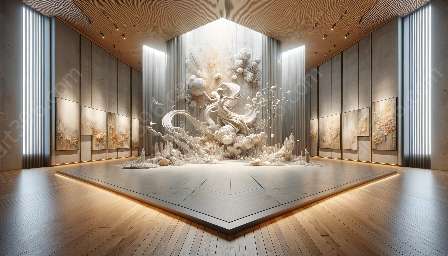Art installations are immersive experiences that challenge the traditional role of a passive observer and invite critical engagement from the audience. The philosophy of spectatorship in art installations explores the dynamic relationship between the viewer, the artwork, and the surrounding environment.
The Role of Audience in Art Installations
The audience plays a crucial role in the context of art installations. Unlike traditional art forms, such as paintings or sculptures, art installations often require active participation and interpretation from the viewers. The audience becomes an integral part of the artwork, contributing to its meaning and impact.
Engaging with Art Installations
When visitors step into an art installation, they enter a realm where their senses and perceptions are challenged. The immersive nature of art installations prompts critical engagement as viewers navigate through the space, interact with the materials, and interpret the messages conveyed by the artwork.
Philosophical Considerations
From a philosophical perspective, art installations redefine the relationship between the spectator and the object of art. The audience becomes an active participant, questioning their role as a viewer and acknowledging their influence on the meaning and experience of the artwork.
Creating Meaning through Participation
Art installations encourage viewers to co-create meaning through their involvement. By exploring the space, contemplating the visual and sensory elements, and reflecting on their own responses, the audience becomes an essential component in the realization of the artwork's significance.
Challenges and Reflections
Art installations challenge traditional modes of spectatorship and encourage reflections on the nature of perception, interpretation, and aesthetic experience. The interactive nature of these installations prompts viewers to confront their own assumptions and biases, making the artistic encounter a deeply personal and transformative process.

